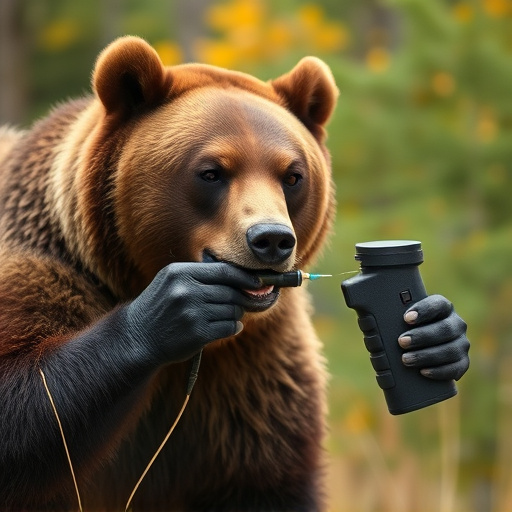Bear spray, while a popular personal safety measure in bear country, is not foolproof. Effective usage relies on proper technique, aiming for sensitive areas, and staying alert. Accidental discharge prevention is crucial—store spray safely, understand wind conditions, practice application, aim low, and avoid running after discharge. Responsible use maximizes its effectiveness as a self-defense tool against aggressive bears.
“Bearing the brunt of a charging bear can be a terrifying scenario, but understanding the effectiveness of bear spray can make all the difference. This comprehensive guide dissects the reality behind bear spray myths, exploring its true potential as a defense mechanism. We delve into the factors influencing its success against aggressive bears and provide crucial tips for safe usage and accidental discharge prevention. Armed with knowledge, you’ll learn to navigate bear country with enhanced confidence.”
- Understanding Bear Spray Effectiveness: Myths vs. Reality
- Factors Influencing the Success of Bear Spray Against Charging Bears
- Tips for Accidental Discharge Prevention and Safe Usage of Bear Spray
Understanding Bear Spray Effectiveness: Myths vs. Reality
Bear spray, also known as bear repellent, has become a popular tool for outdoor enthusiasts and individuals living in areas with bear populations. While it is widely used, there are many misconceptions about its effectiveness against charging bears. Understanding the reality of bear spray’s performance is crucial for safety when encountering these majestic creatures.
One common myth is that bear spray can stop a charging bear in its tracks instantly. In truth, while bear spray is highly effective at creating a temporary barrier and causing the bear to alter its behavior, it does not guarantee immediate cessation of an attack. Accidental bear spray discharge prevention is key; users must understand the range and wind conditions, as proper application within the recommended distance significantly increases effectiveness. The spray creates irritation to the bear’s eyes, nose, and respiratory system, leading many bears to retreat. However, in some cases, especially with defensive or curious bears, it may only deter them temporarily, allowing them to regroup and potentially charge again if they perceive no immediate danger.
Factors Influencing the Success of Bear Spray Against Charging Bears
The effectiveness of bear spray in deterring a charging bear depends on several factors, beyond just the spray itself. One crucial aspect is the user’s technique; aiming for the bear’s face and eyes can increase the chances of a successful reaction. However, accurate shooting can be challenging during a sudden encounter, especially if the user is frightened or panicking. Training and practice are essential to improve response time and aim, which can significantly impact the outcome.
Another factor is the type of bear spray used and its proper handling. Bear sprays vary in capsaicin concentration and delivery mechanism, influencing their potency. Ensuring the canister is kept sealed until needed helps prevent accidental discharge, which could worsen the situation. Users should also be aware of the spray’s range and duration, as factors like wind direction can affect how effectively it reaches the bear.
Tips for Accidental Discharge Prevention and Safe Usage of Bear Spray
Bear spray is a powerful tool for self-defense against aggressive bears, but it’s crucial to handle and use it safely to avoid accidental discharges that could harm you or others. One of the key aspects of preventing accidental bear spray discharge is storing and carrying it responsibly. Keep bear spray in its original container, with the nozzle protected, and store it in a secure, closed area, away from reach of children and pets. When hiking or camping, ensure your spray is easily accessible but not exposed to direct sunlight or extreme temperatures, which can affect its performance.
Before using bear spray, familiarize yourself with its mechanism and safety features. Practice the spray technique at close ranges in controlled environments to understand the range and effectiveness of the spray. Always aim low, towards the bear’s legs and paws, as this is where it will be most effective in immobilizing the animal. Avoid aiming for the face or upper body, as it may cause the bear to become more aggressive. Never spray in windy conditions, as particles can blow back onto you. In case of an accidental discharge, do not run as it might trigger a charge; instead, drop to the ground and cover your face with your arms until the threat passes.
In conclusion, bear spray can be an effective deterrent against charging bears when used properly. Understanding its limitations and the factors influencing its success is crucial for safe outdoor experiences. By following expert advice on accidental discharge prevention and safe usage, folks can better protect themselves in bear country. Remember that responsible use and knowledge are key to navigating these encounters with confidence.
